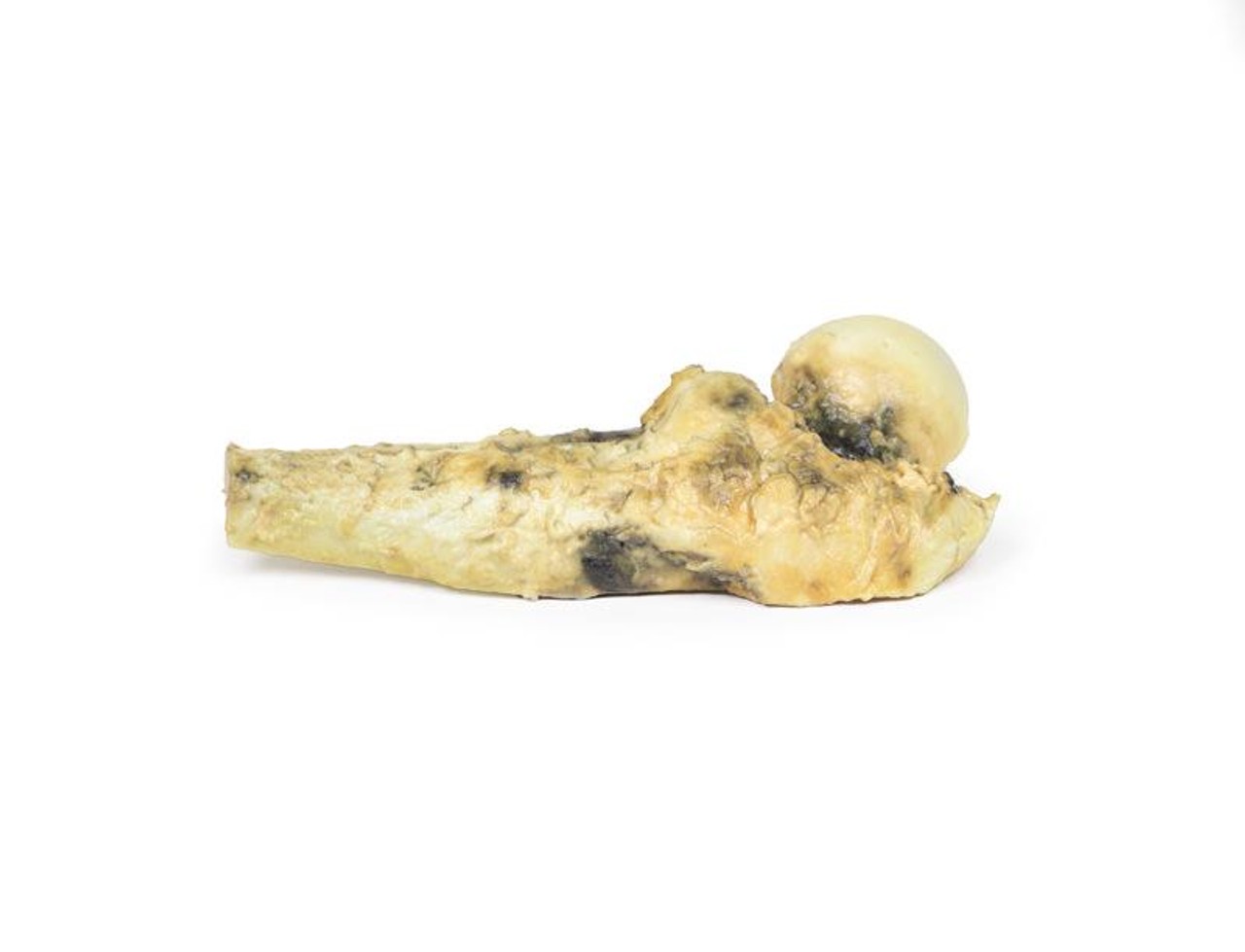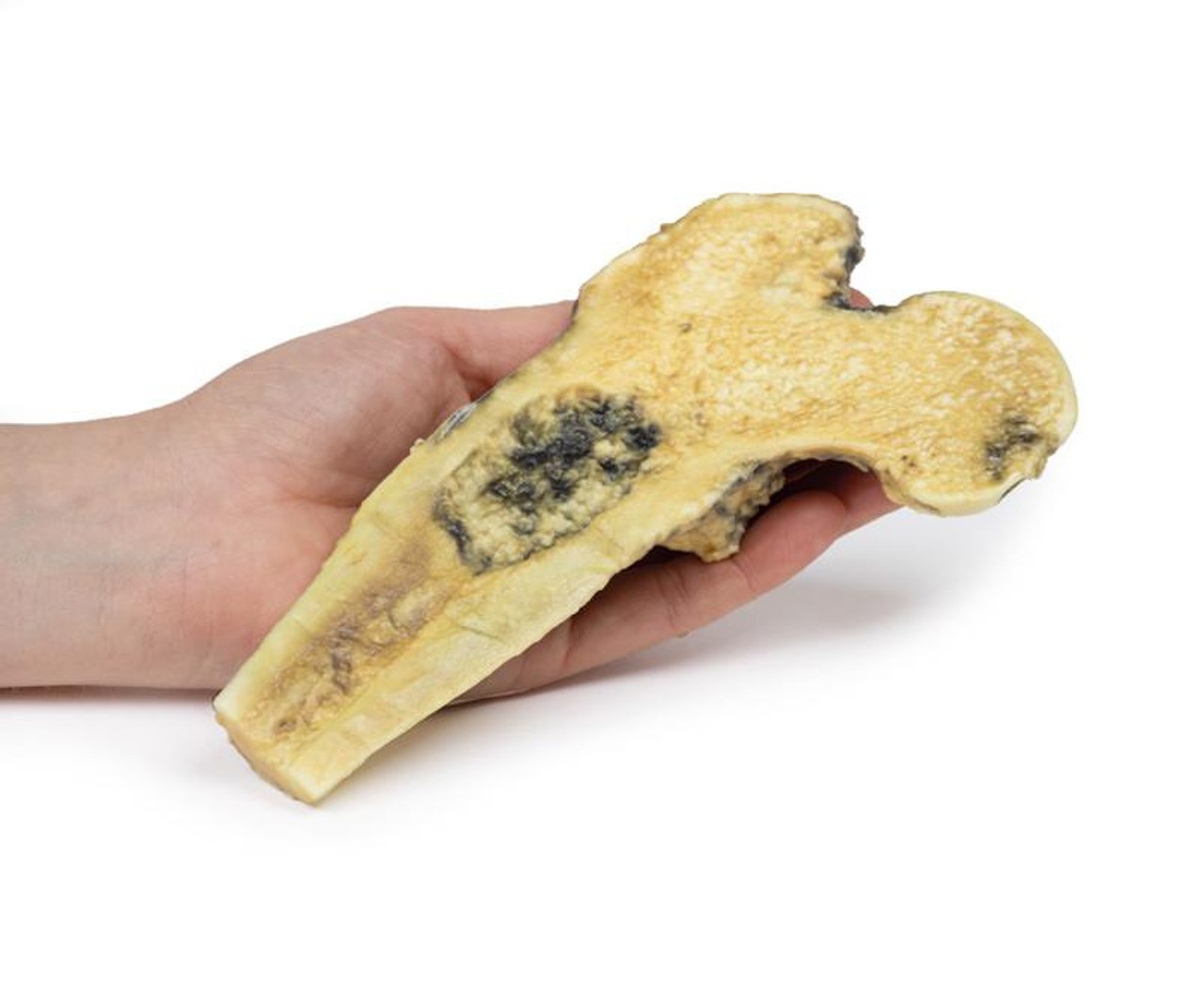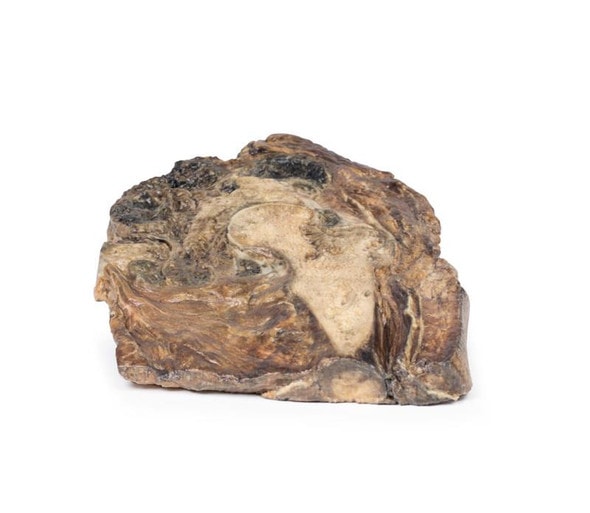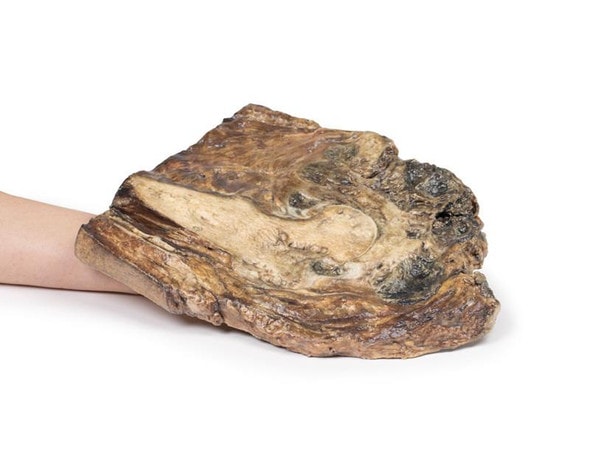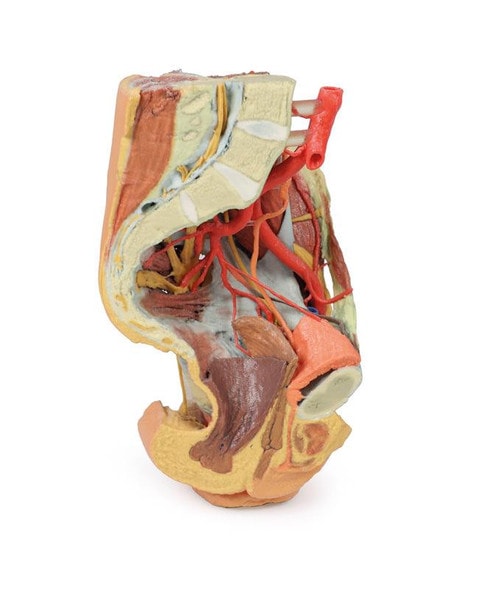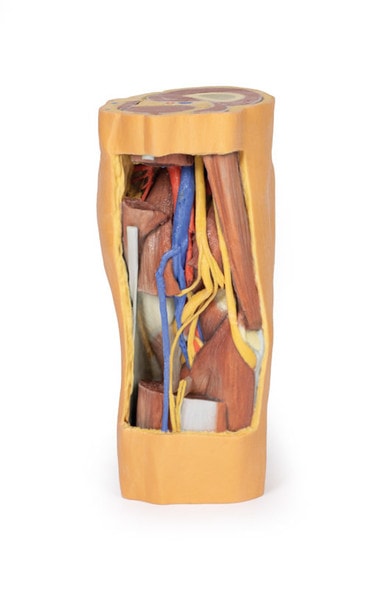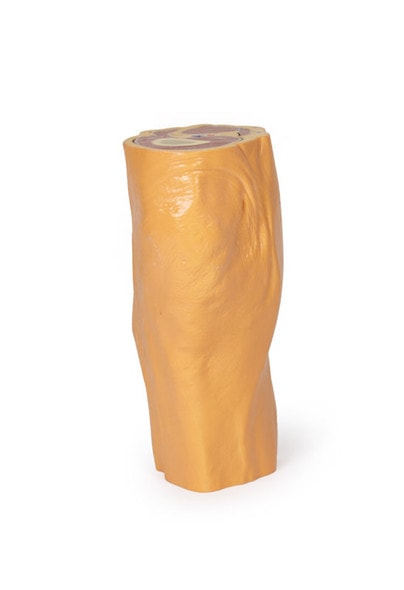Description
Developed from real patient case study specimens, the 3D printed anatomy model pathology series introduces an unmatched level of realism in human anatomy models. Each 3D printed anatomy model is a high-fidelity replica of a human cadaveric specimen, focusing on the key morbidity presentations that led to the deceasement of the patient. With advances in 3D printing materials and techniques, these stories can come to life in an ethical, consistently reproduceable, and easy to handle format. Ideal for the most advanced anatomical and pathological study, and backed by authentic case study details, students, instructors, and experts alike will discover a new level of anatomical study with the 3D printed anatomy model pathology series.
Clinical History
A 57-year old male attends complaining of recurrent pain in his right thigh. On examination there is no palpable abnormality in the thigh. An x-ray of the limb showed bony absorption associated with expansion and periosteal reaction at the proximal right femur. A CT of the limb showed a mass in the proximal right femur. A biopsy was taken of the lesion. Subsequently he had excision of the right upper femur followed by insertion of a prosthesis.
Pathology
The specimen comprises the head, neck and upper third of the shaft of the right femur, sawn longitudinally to display the cut surface. In the medullary cavity of the upper portion of the shaft is an ovoid tumor that is 6.5 cm in maximum diameter. The tumor is not encapsulated and has a hemorrhagic cut surface with pale hyaline and cystic areas. Histologically, this is a low grade chondrosarcoma.
Further Information
Chondrosarcomas are malignant bone tumors that produce cartilage. These are the third most common primary bone malignancy after myeloma and osteosarcoma. Conventional tumors are the most common subtype of chondrosarcoma, making up 90% of cases. Less frequently diagnosed subtypes include clear cell, dedifferentiated and mesenchymal chondrosarcomas.
Some chondrosarcomas arise from pre-existing benign lesions, such as enchondroma or osteochondroma. Common mutations in chondrosarcomas are point mutations in the IDH1 and IDH2 genes as well as silencing of CDKN2A tumor suppressor gene. Chondrosarcomas that occur in multiple osteochondroma syndrome have mutations in the tumor suppressor EXT genes.
Men are twice as likely to develop chondrosarcoma than women. The axial skeleton is more frequently affected than the appendicular skeleton. Around 20% affect the femur. These are largely slow growing tumors. They usually present with painful and gradually enlarging masses. At the time of diagnosis, most are low grade tumors that rarely metastasize. The lungs are the most common site for distant spread. Grade 1 tumors have an almost 90% 5-year survival rate, whereas with grade 3 chondrosarcoma the 5-year survival rate drops to 43%.
CT scan is the optimal radiological investigation for diagnosis with MRI also frequently used. Biopsies may be taken to assist diagnosis. Treatment depends on the grade and the location of the tumor. Complete surgical resection is the standard treatment. Generally, chondrosarcomas do not respond to chemotherapy or radiotherapy given they very slow growing tumors.
Advantages of 3D Printed Anatomical Models
- 3D printed anatomical models are the most anatomically accurate examples of human anatomy because they are based on real human specimens.
- Avoid the ethical complications and complex handling, storage, and documentation requirements with 3D printed models when compared to human cadaveric specimens.
- 3D printed anatomy models are far less expensive than real human cadaveric specimens.
- Reproducibility and consistency allow for standardization of education and faster availability of models when you need them.
- Customization options are available for specific applications or educational needs. Enlargement, highlighting of specific anatomical structures, cutaway views, and more are just some of the customizations available.
Disadvantages of Human Cadavers
- Access to cadavers can be problematic and ethical complications are hard to avoid. Many countries cannot access cadavers for cultural and religious reasons.
- Human cadavers are costly to procure and require expensive storage facilities and dedicated staff to maintain them. Maintenance of the facility alone is costly.
- The cost to develop a cadaver lab or plastination technique is extremely high. Those funds could purchase hundreds of easy to handle, realistic 3D printed anatomical replicas.
- Wet specimens cannot be used in uncertified labs. Certification is expensive and time-consuming.
- Exposure to preservation fluids and chemicals is known to cause long-term health problems for lab workers and students. 3D printed anatomical replicas are safe to handle without any special equipment.
- Lack of reuse and reproducibility. If a dissection mistake is made, a new specimen has to be used and students have to start all over again.
Disadvantages of Plastinated Specimens
- Like real human cadaveric specimens, plastinated models are extremely expensive.
- Plastinated specimens still require real human samples and pose the same ethical issues as real human cadavers.
- The plastination process is extensive and takes months or longer to complete. 3D printed human anatomical models are available in a fraction of the time.
- Plastinated models, like human cadavers, are one of a kind and can only showcase one presentation of human anatomy.
Advanced 3D Printing Techniques for Superior Results
- Vibrant color offering with 10 million colors
- UV-curable inkjet printing
- High quality 3D printing that can create products that are delicate, extremely precise, and incredibly realistic
- To improve durability of fragile, thin, and delicate arteries, veins or vessels, a clear support material is printed in key areas. This makes the models robust so they can be handled by students easily.

